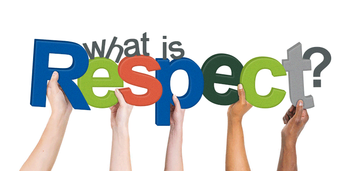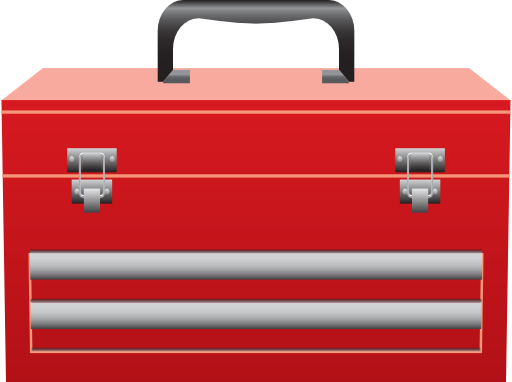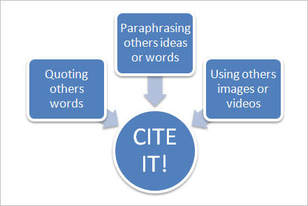Lesson 7:
Intellectual Property
THE LESSON MISSION
Citing Work

Another reason it is important not to plagiarize is so they show respect for work and ideas that others create. Respect is a way of showing that you admire and value something. You show respect for other people's work when you give them credit when you use their work. One way to give them credit is by providing a citation. A citation is the key information about a source used for a report or other research project, including its author, title, publisher, and date of publication.
It is important to include citations in a report, project, or presentation as a formal way to give credit to other people’s work they use. Citations also help others find the information that students have drawn from in their work. Citations are usually found in the footnotes or bibliography section of a report or book.
It is important to include citations in a report, project, or presentation as a formal way to give credit to other people’s work they use. Citations also help others find the information that students have drawn from in their work. Citations are usually found in the footnotes or bibliography section of a report or book.
How to Cite
|
There are many different ways to cite other people's work. One common method is the MLA Method. Let's pretend you wanted to use the article entitled, One Small Step, One Great Man by Cameron Keady that you found on the Time for Kids website. Below, is the way you would cite this source.
Keady, Cameron. “One Small Step, One Great Man.” Time for Kids. Time Inc., 27 Aug. 2012. Web. 07 Sep. 2012. <http://www.timeforkids.com/news/one-small-step-one-great-man/44396>.
|
Sometimes you will not be able to find all the information to cite a source. If this happens you should include all the information that is available. There are many websites online now that will do the citing for you. All you have to do is copy and paste the url address into the website citing box.
CHALLENGE 3: USING WHAT YOU KNOW

Below are several polls with different scenarios regarding intellectual property. I will read each scenario to the class. Then, you will discuss the scenario with your shoulder partner. If you do not have a shoulder partner, join the other shoulder partners at your table. Decide if the person’s action in each scenario was okay or not okay, and select your answer in the poll. We will discuss each scenario after everyone votes. Let's get started. Click on the button that reads, Scenario Polls, below.
CHALLENGE 4: SHOWING WHAT YOU KNOW

Let's see if you could properly cite an internet source. Below is the information about two websites. With your shoulder partner, work together to put the information in MLA format. You can use the example in Challenge 2. Click on the button below that reads, Citing Activity to complete the activity.
MISSION ACCOMPLISHED
LESSON DEVELOPED USING:
WHOSE IS IT, ANYWAY?
Common Sense Education. (2017). Whose Is It, Anyway? (3-5). [online] Available at: https://www.commonsense.org/education/lesson/whose-is-it-anyway-3-5 [Accessed 24 Sep. 2017].
WHOSE IS IT, ANYWAY?
Common Sense Education. (2017). Whose Is It, Anyway? (3-5). [online] Available at: https://www.commonsense.org/education/lesson/whose-is-it-anyway-3-5 [Accessed 24 Sep. 2017].







